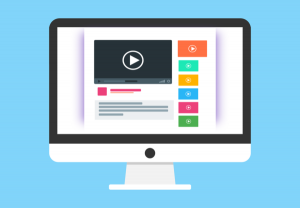The goal of a sales email is to start a conversation.
You want to pique enough interest, and show enough value, that you get the reader to hit “reply.”
But when you sit down to write a cold email, more often than not, you don’t know what to say. And while cold email isn’t nearly as uncomfortable as cold calling, chances are you feel a little weird showing up in someone’s inbox unannounced, trying to convince them you’re worth their time.
So, oftentimes, you might resort to being polite and using pleasantries such as, “I hope this messages finds you well,” or “How are you?” to try to make yourself feel less uncomfortable.
The thing is, being too polite in a cold email actually hurts your chance of getting a response. In addition to wasting your reader’s valuable time, politeness is an automatic signal that you’re selling something.
Have you ever heard the saying, “No one likes to be sold to, but everyone likes to buy?” As soon as your reader realizes you’re trying to sell them something, you’ve lost them. Which is why it’s so important to focus your tone and content on “adding value” instead of “selling.”
1. Don’t Be Polite, Be Considerate
While polite language may impress your grandmother’s friends at the dinner table, in email it’s a tell-tale sign you want something from your reader.
Take a moment to imagine you have a terrible headache, are in a rush, and want to purchase some Advil. When you make it into a drug store, the first sales associate you see asks, “Hi, how are you today?” and proceeds to tell you about a special deal they have going on. The result? You escape that one-way conversation as quickly as possible.
Another sales associate then sees you reading the aisle signs, walks over to you, and says, “Hey, can I help you find something?”
While the first sales associate is outwardly polite, she actually comes across as intrusive and caring more about her sales goals than your needs. In contrast, by asking a question in response to your behavior, the second sales associate shows greater empathy and is genuinely helpful.
How can you be like the second sales associate in your emails?
Let’s say you provide a service that helps companies identify and fix software bugs faster. Instead of using several paragraphs to explain who you are, why you’re reaching out, and even what your service is, focus on the benefits you can provide.
You might start off by saying, “Hi Joe, How often does your team struggle to find bugs in your code quickly?” This grabs the reader’s attention by immediately expressing value.
2. Eliminate the Filler
While filler does nothing but take up space and waste time, direct language exudes professionalism and efficiency and is more likely to inspire replies.
Since it can feel a little uncomfortable to jump right in, one way to make things feel more natural is to use “humble confidence.” Rather than relying on polite filler phrases, focus on your prospects’ needs and desires. In other words, make the email about them, not about you.
Be confident by expressing the real value of your product or service clearly and directly. Be willing to go for it. Be bold. Don’t do this with grand claims, but by utilizing specific social proof, like: “I helped [company1] and [company2] increase their email response rates by 75 percent using a similar strategy.”
3. Write to a Human Being
Think about the great conversations you’ve had that have led to meaningful connections. Do they stand out because the other person was very polite? Or because they were interesting, or somehow added value to your life?
Remember those conversations and interactions when you write your next cold email. At the end of the day, you’re connecting with a person, and you want to inspire a response from them.
Instead of trying to soften the blow of emailing a stranger with, “I hope this finds you well,” and other overly polite language, show you have something interesting to offer. Also, use a tone that’s conversational and easy to connect with.
Imagine you’re selling a project management tool that uses gamification to increase team efficiency. You’re meeting an ideal prospect for the first time and you only have a few minutes of their time. What would you say to pique their curiosity so they want to learn more?
You could say something like, “I have a tip about how you can streamline team communication and ramp efficiency while improving team morale.“
4. Put It Into Practice
With a little willingness to check politeness at the door, it’s not hard to craft powerful emails. You don’t have to be a professional writer. You just have to understand the true value of your product or service and communicate that value clearly and succinctly.
Think about what’s important to your target customer and how your product addresses that.
Try writing a list of high-level benefits without using industry-specific terms or complex technical language. From there, generate one or two powerful sentences that express your highest-level value in as few words as possible. You can now use these sentences as the basis of your emails.
All of a sudden, you’ve got something that pops, is easy to read, and clearly adds value. That’s what you need to start a conversation.
Digital & Social Articles on Business 2 Community(20)







